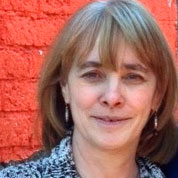Make Your Teaching Goals REAL This Year
CHALKING THE LINE | BY DEB MEYER | 8 MIN READ

What are your ultimate teaching goals? Do you have a good game plan for the new school year?
Teaching goals can be a lot like New Year’s resolutions—created and quickly abandoned. Why is it that 80% of New Year’s resolutions are reported to fail by February? How might you avoid missing opportunities to realize your main objectives this academic year?
Most teachers use or have heard of SMART goals. Along with setting clear deadlines, these goals use an acronym to make them easier to accomplish: Specific, Measurable, Achievable, Realistic, Time-Bound. They are not just for students—for example, Susan Hitt used her blog to set a SMART goal to strengthen her professional learning network (PLN).
However, I have found that REAL goals are more effective in changing my practice more in meaningful and enduring ways. When the goals of teaching are REAL, they reflect changes I’ll be making that are steeped in a mastery mindset of continuous improvement. In the process of working toward them, I expect that my habits will become more authentic and long-lasting, transforming a “teaching goal” into a “teaching practice.”
Let me break down this acronym in a way that might be useful for setting teaching goals in the new school year. For each part of the REAL acronym, I’ll share examples of goals I hit and goals I missed in my college education courses. All of them can readily be applied by any teacher in any classroom.
Jump To A Section
Routine
REAL goals focus on developing routine practices that require a certain amount of flexibility to be successful. This means REAL goals don’t have specific timelines or end dates. I’ll set a teaching goal to become part of my routine practice and expect to continually work to improve it.
Crucially, I know that not every shot I take at these goals will be a made three-pointer. I’ll inevitably put up some airballs as well. But I can always try again because the changes I’m seeking to make are part of my continuous routine.
A score: One of my teaching goals was for every class meeting to involve student-to-student interaction around key concepts. The routine was to always have at least one activity planned for each class, but my early attempts tended to have the activities at the end of class—and sometimes I did not have time to do them at all. This quickly showed me that I needed to adjust and plan activities at different parts of the lesson (beginning, middle and end) and then use them flexibly as we reached that part of the lesson. By planning multiple student interactions instead of just one, I could choose to skip an activity if it did not seem to be needed at that time.
An airball: A teaching goal that did not work for me was using technology during each class meeting. This was a department-wide goal that everyone had agreed to. I tried to integrate the SMART Board and iPads into my teaching but never could implement them as part of a successful routine—even after attending professional development, collaborating with colleagues and doing my own self-study. Why didn’t this goal work? Because I could not figure out how to routinize it like I did the student-to-student interactions.
Engaging
Setting goals should be personally engaging for the teacher. We focus on engaging students, but research has shown that successful teachers plan, teach and assess in ways they find meaningful. Teaching goals should be lively and interesting or give space to creative ideas that we want to try out.
I have found that, to be instructionally dialed in as a teacher, my goals need to involve me physically, cognitively, socially and emotionally. The engagement component of REAL goals can be illustrated with my goal for improving student-to-student interaction during class.
Missed lay-up: One of the first mistakes I made was to not monitor the student-to-student interactions. Initially, I thought I should “sit on the bench” during the early parts of these interactions. But rather than stepping back, I needed to be pushing in. I was missing teachable moments as I hung back by my desk and tried to stay out of the students’ way, only to later discover they had needed my support.
Rebound: When I realized that my goal worked better when I was fully engaged, I began intentionally asking questions that prompted students to interact with each other. I completed the activities on my own before class, noting specific ways in which the class concepts might be applied or misapplied. Then, in class, I prompted student groups about which key concepts might be useful and where there could be multiple perspectives or confusion. I increased my engagement in the teaching goal by explicitly creating a place for me.
Authentic
Reaching my objectives also means making sure I begin from a place of authenticity. My goals needed to promote students’ engagement and deeper-level understanding. While there are different views on what makes a learning activity authentic for students, two common descriptors are:
- Authentic activities relate to life experiences that apply the concepts and skills being taught.
- Authentic activities require critical thinking, problem-solving, research, discussion/debate, and organization and evaluation of data or information.
For teaching goals to hit this mark, I needed to involve my students using contexts that were currently relevant to them.
A clanker off the rim: Setting an authentic teaching goal is risky because it means I am trying to improve my practice with examples, materials and activities that are new and unfamiliar rather than pulling from my “tried and true” examples and activities. These goals must tap into what is currently happening in students’ lives, which means I will risk failing. The lack of authenticity was a reason that my integration of the technology goal I mentioned earlier failed. I had not yet developed sufficient knowledge and skill, as well as personal engagement, to apply the technology in meaningful ways.
Three-pointer: Because authentic goals are risky, they have to be executed at the right time and in the right way. I found that I needed to try out the “authentic ideas” I had for my student-to-student interactions on my own first, something I didn’t typically do as an experienced teacher. This change in practice has meant looking at my plans from different angles and getting to know my students so I can better anticipate what would have an impact on them. I have scored with goals that require me to apply concepts and skills in new ways—and critically analyze them before my students do.
Long-Lasting
Goals of teaching should be meaningful, long-lasting changes to teaching practices. Why set a goal that is faddish and will soon disappear? Every teacher knows that a quick fix is short-term. Meaningful change comes over time and sustains momentum until the change has so transformed our practice that we can’t recall when we didn’t do it this way.
Overtime: A long-lasting teaching goal is never truly finished. For example, I have the ongoing goal of using student-to-student interaction in every class. This began years ago in one class but is now present in every class. Although I miss it from time to time, I cannot imagine planning a class where the students will not interact with each other. However, my short-lived goal of integrating iPads and the SMART Board into my lessons never made it through a semester in any single class.
A key to setting a long-lasting teaching goal is to consider whether or not it is something you could see yourself doing five or 10 years from now. Whereas I do not believe good teaching needs to involve iPads or SMART Boards, I can always see my classes involving student-to-student interaction—that has become a REAL goal for me.
When setting teaching goals for this school year, put them to the REAL test:
- Can the goal be part of a flexible routine in your practice?
- Do you feel fully engaged as a teacher when implementing this goal?
- Does the goal require you to be authentic in taking risks and trying out relevant and contemporary ideas?
- Will the goal lead to long-lasting changes that are fundamental to your teaching philosophy? In other words, will you enact a transformational rather than a technical change?
More Ideas for Setting Teaching Goals
Try out these two resources—but remember to make your goals REAL.
- Jennifer Gonzalez shares goal-setting tips for teachers on her blog, Cult of Pedagogy, and offers these tips as a podcast that you can listen to on your commute to school.
- Janelle Cox’s blog on TeachHub offers 10 areas for professional development goals.
About the Author
 Deb Meyer is a professor of education at Elmhurst University and a former classroom teacher in Mesa, Arizona. She teaches undergraduate courses to prospective teachers in educational psychology and upper elementary/middle school literacy methods and graduate courses in teacher leadership.
Deb Meyer is a professor of education at Elmhurst University and a former classroom teacher in Mesa, Arizona. She teaches undergraduate courses to prospective teachers in educational psychology and upper elementary/middle school literacy methods and graduate courses in teacher leadership.
Learn more about Elmhurst University
Interested in Elmhurst’s education program? Request information today!



